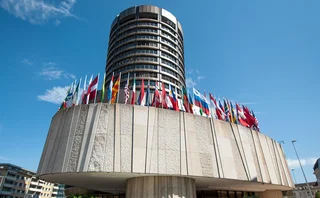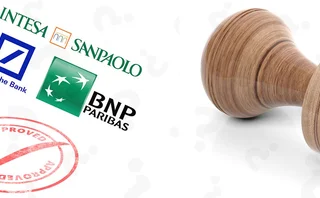
HKMA ring-fenced assets before Lehman collapse
The Hong Kong Monetary Authority (HKMA) had identified 19 foreign banks whose financial health could have had a negative impact on the Hong Kong banking system before the collapse of Lehman Brothers in September last year.
At the time, the financial services watchdog moved to ring-fence the assets held by those institutions in Hong Kong where possible. It also expressed concerns to local financial institutions about the risks inherent in certain structured credit instruments, such as collateralised debt obligations (CDOs).
The revelations were made on April 14 by HKMA's chief executive Joseph Yam, who appeared before the Hong Kong legislature's subcommittee established to study issues arising from Lehman Brothers-related minibonds and structured financial products. This was the first time Yam had received a summons from the subcommittee, which has held its fifth hearing since February after many retail investors in Hong Kong lost money on structured credit instruments called minibonds. Previously, Chan Ka-keung, secretary for financial services and the treasury, had appeared before the subcommittee.
Yam said that, in a bid to maintain stability of the city's banking system and protect the interests of Hong Kong investors, the HKMA had identified 19 international banks and put them on an "intensive monitoring" list. The HKMA then ring-fenced the assets of their branches in Hong Kong to ensure they could not be repatriated by their parents.
"We have had concerns over the [knock-on effect that could be spread to Hong Kong] on a systematic scale... because in the end the victims are the investors and depositors [within our own jurisdiction]," he told law-makers in the subcommittee.
Yam said the HKMA has also increased the magnitude of coefficients it uses for stress testing and has used such tests to study the worst-case scenarios facing the Hong Kong banking system. As a result, Yam said the HKMA had devised "various back-up plans" aimed at providing liquidity funding the Hong Kong branches of foreign banks.
While Yam failed to provide further details, he said in a column on the HKMA's website last week entitled 'Supervising international banks - co-operation among banking supervisors is important' that ring-fencing generally falls into three categories.
The first has the aim of retaining adequate capital to support the normal activity of a bank in the host jurisdiction, for example, by requiring the subsidiary bank to operate with a more conservative capital adequacy ratio. The second has the objective of upgrading the quality of liquidity available to the subsidiary bank in the host jurisdiction. For example, the credit risk associated with placing liquid funds with other financial institutions - including the parent bank - would need to be closely scrutinised.
The last category involves preventing deterioration in the asset quality of a subsidiary bank that might be brought about by booking doubtful assets originating overseas in the bank's balance sheet.
During the subcommittee meeting, legislators questioned Yam about whether or not he was aware of the riskiness of the minibonds, or credit-linked notes tied to a basket of synthetic CDOs, marketed by Lehman Brothers. Yam said the HKMA began asking banks to pay special attention to risk assessment and client suitability related to CDOs due to their high-risk nature back in 2006.
But Yam said the HKMA could not issue risk alerts on individual products or financial institutions as the regulator does not have a front-line supervisory role and ethical issues are raised if the regulator is seen to make judgements regarding specific financial products.
The chief financial officer at one local bank said he was not aware of such monitoring activity conducted by the HKMA.
Only users who have a paid subscription or are part of a corporate subscription are able to print or copy content.
To access these options, along with all other subscription benefits, please contact info@risk.net or view our subscription options here: http://subscriptions.risk.net/subscribe
You are currently unable to print this content. Please contact info@risk.net to find out more.
You are currently unable to copy this content. Please contact info@risk.net to find out more.
Copyright Infopro Digital Limited. All rights reserved.
You may share this content using our article tools. Printing this content is for the sole use of the Authorised User (named subscriber), as outlined in our terms and conditions - https://www.infopro-insight.com/terms-conditions/insight-subscriptions/
If you would like to purchase additional rights please email info@risk.net
Copyright Infopro Digital Limited. All rights reserved.
You may share this content using our article tools. Copying this content is for the sole use of the Authorised User (named subscriber), as outlined in our terms and conditions - https://www.infopro-insight.com/terms-conditions/insight-subscriptions/
If you would like to purchase additional rights please email info@risk.net
More on Regulation
Watchlist and adverse media monitoring solutions 2024: market update and vendor landscape
This Chartis report updates Watchlist monitoring solutions 2022 and focuses on solutions for sanctions (name and transaction) screening and monitoring adverse media and its related elements
Basel Committee reviewing design of liquidity ratios
Focus on LCR and NSFR after Silicon Valley Bank and Credit Suisse, but assumptions may not change
Risk, portfolio margin, regulation: regtech to the rescue
A white paper outlining the complexity of setting the course for risk, margin and regulation
Prop shops recoil from EU’s ‘ill-fitting’ capital regime
Large proprietary trading firms complain they are subject to hand-me-down rules originally designed for banks
Revealed: the three EU banks applying for IMA approval
BNP Paribas, Deutsche Bank and Intesa Sanpaolo ask ECB to use internal models for FRTB
FCA presses UK non-banks to put their affairs in order
Greater scrutiny of wind-down plans by regulator could alter capital and liquidity requirements
Industry calls for major rethink of Basel III rules
Isda AGM: Divergence on implementation suggests rules could be flawed, bankers say
Saudi Arabia poised to become clean netting jurisdiction
Isda AGM: Netting regulation awaiting final approvals from regulators
Most read
- Podcast: Olivier Daviaud on P&L attribution for options
- SG trader dismissals shine spotlight on intraday limit controls
- Too soon to say good riddance to banks’ public enemy number one







